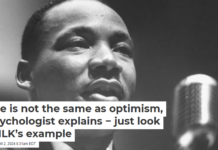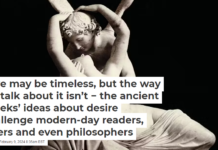
By Neil Edwards, The Open University
Devoted followers of international wrangling on climate change will see much that they recognise in the five-page text emanating from the UN climate talks in Lima. The “parties” (countries) have long accepted the maximum 2°C warming target; that mitigation and adaptation must go hand-in-hand; and that past emissions of developed countries need to be accounted under “common but differentiated responsibilities.”
Actual promises of financial assistance to developing nations show little sign of progressing to their US$100bn target, though, and emission pledges so far fall far short of levels consistent with 2°C of warming. The hard-fought document restates a commitment from all countries to raise their level of ambition in order to arrive at the next meeting in Paris in December 2015 with a convincing plan to resolve their differences once and for all.
Radical approaches will be needed. Climate change is a particularly tough nut to crack: there is still deep uncertainty over its likely impact; there are sharply differing viewpoints and conflicts of interest; and there is no central authority to implement any agreed solutions. Social planners call these public policy issues that challenge conventional thinking “wicked” problems.
Most awkward of all, climate and development are deeply interconnected, driving a deep rift between developed and developing blocs. Changes happening now are a result of the fossil-fuelled development of the richer countries, while issues of public health and energy security in poorer nations can seem remote from long-term climate change – at least until rising seas or diminishing harvests intervene.
The climate policies that animate negotiators each December must be thoroughly embedded in the everyday battle to escape poverty that still afflicts the greater part of humanity. Climate change is for life, not just for Christmas.
Filling the green growth knowledge gap
For the third year running a UN climate conference notes with grave concern the significant gap between countries’ emissions pledges and the levels required to stay within the magic two degrees. However the lamentable lack of action is partly the result of a parallel gap in knowledge as politicians need to know how to reduce emissions without damping growth.
Climate change is pushing climate and socio-economic systems far from their equilibrium states and researchers are struggling to catch up. Traditional economic modelling relies on equilibrium assumptions of perfect markets and full employment, but the scale of transition required breaks many of these assumptions. Green growth means exploiting the resulting opportunities to mobilise underused resources.

BLM Nevada, CC BY
Economists can’t solve the whole problem on their own. Neither can climate scientists, lawyers, sociologists, sustainability experts or people who work on the heath impacts of climate change. All these fields and others need to work together to come up with the best possible policies.
If you won’t, we will
But if politicians can’t, or won’t, find a solution to climate change then other actors are waiting to step in. What was once the exclusive realm of national negotiators now sees, for instance, groups of leading companies and major cities calling for coordinated action. Such widening of participation is one of three core suggestions to accelerate progress backed by the Yale Climate Dialogue prior to Lima.
As highlighted by Lord Stern, the key to success in Paris has less to do with wrangling over financial transfers between self-interested governments and more to do with steering the trillions of dollars spent annually on infrastructure and energy transitions in developing countries towards clean, low-carbon options.
There are plentiful ideas and initiatives to make this happen, but before a vision of a sustainable future can become an everyday reality, our leaders need solutions from the research community that reflect the true scale of the problem and its wicked, multi-faceted ways.
![]()
This article was originally published on The Conversation.
Read the original article.




















